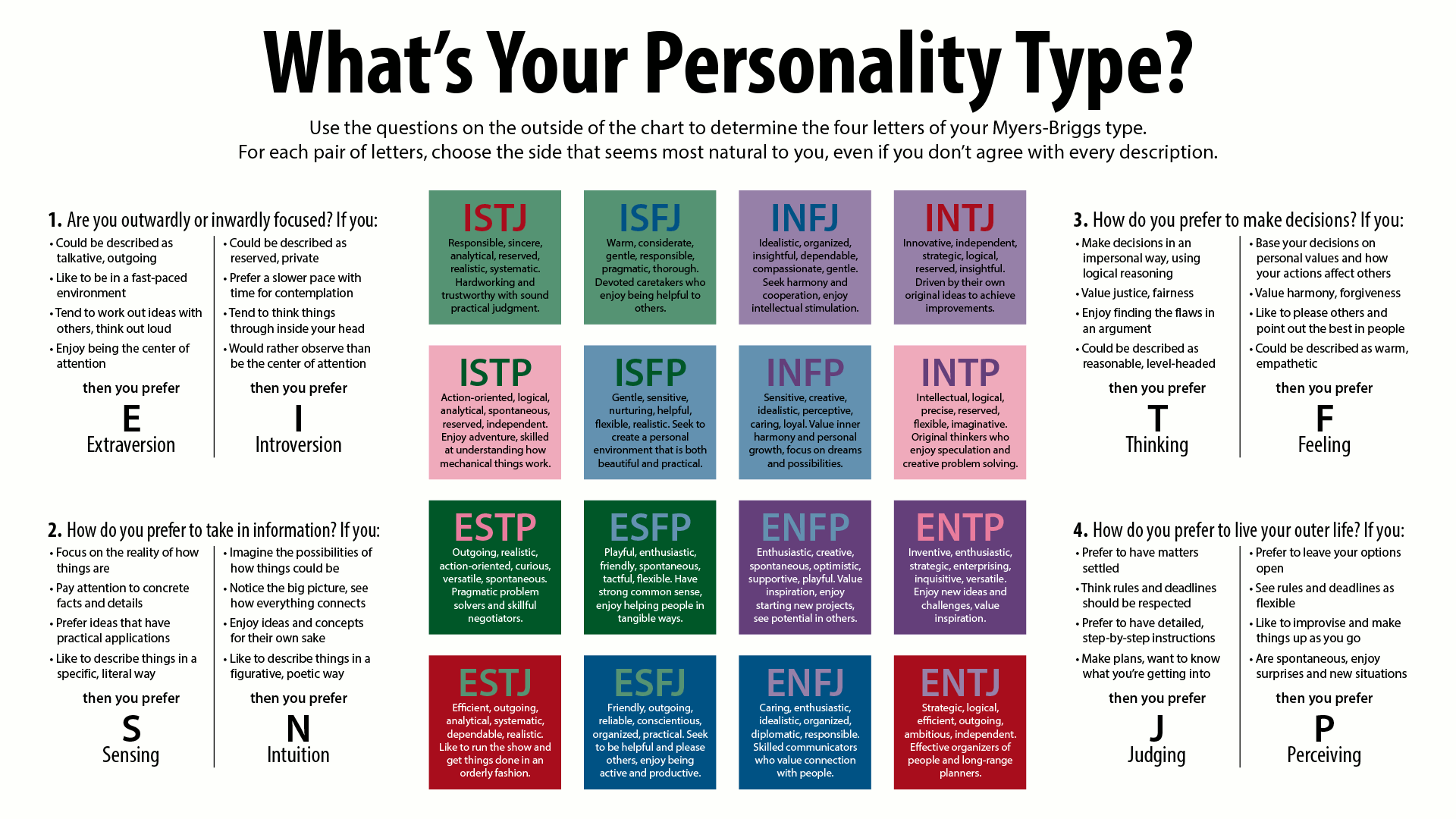|
Work Personality Index
The Work Personality Index is a psychometric assessment that measures personality traits. It was designed by Dr. Donald Macnab and Shawn Bakker. The questionnaire is designed to identify personality traits that relate to work performance; it usually takes between 15 and 20 minutes to complete. It was created for the applications of selecting job candidates, guiding career choices and improving team functionality. The Work Personality Index assesses 17 primary scales that measure aspects of work personality to make links between an individual’s preferences and their work behavior. These 17 scales are categorized into five groups that provide a view of work personality. The Work Personality Index measures personality traits immediately applicable to work settings. The test items revolve around typical work experiences, and for people to respond to them correctly they need to be able to relate to the situations presented in each item. For this reason, the Work Personality Index ... [...More Info...] [...Related Items...] OR: [Wikipedia] [Google] [Baidu] |
Psychometric
Psychometrics is a field of study within psychology concerned with the theory and technique of measurement. Psychometrics generally refers to specialized fields within psychology and education devoted to testing, measurement, assessment, and related activities. Psychometrics is concerned with the objective measurement of Latent variable, latent constructs that cannot be directly observed. Examples of latent constructs include intelligence, introversion, Mental disorder, mental disorders, and Educational measurement, educational achievement. The levels of individuals on nonobservable latent variables are Statistical inference, inferred through mathematical model, mathematical modeling based on what is observed from individuals' responses to items on tests and scales. Practitioners are described as psychometricians, although not all who engage in psychometric research go by this title. Psychometricians usually possess specific qualifications such as degrees or certifications, a ... [...More Info...] [...Related Items...] OR: [Wikipedia] [Google] [Baidu] |
Personality Traits
In psychology, trait theory (also called dispositional theory) is an approach to the study of human personality. Trait theorists are primarily interested in the measurement of ''traits'', which can be defined as habitual patterns of behaviour, thought, and emotion. According to this perspective, traits are aspects of personality that are relatively stable over time, differ across individuals (e.g. some people are outgoing whereas others are not), are relatively consistent over situations, and influence behaviour. Traits are in contrast to states, which are more transitory dispositions. In some theories and systems, traits are something a person either has or does not have, but in many others traits are dimensions such as extraversion vs. introversion, with each person rating somewhere along this spectrum. There are two approaches to define traits: as internal causal properties or as purely descriptive summaries. The internal causal definition states that traits influence our behav ... [...More Info...] [...Related Items...] OR: [Wikipedia] [Google] [Baidu] |
Occupational Information Network
The Occupational Information Network (O*NET) is a free online database that contains hundreds of job Work or labor (or labour in British English) is intentional activity people perform to support the needs and wants of themselves, others, or a wider community. In the context of economics, work can be viewed as the human activity that contr ... definitions to help students, job seekers, businesses and workforce development professionals to understand today's world of work in the United States. It was developed under the sponsorship of the United States Department of Labor, US Department of Labor/Employment and Training Administration (USDOL/ETA) through a grant to the North Carolina Employment Security Commission (now part of the NC Commerce Department) during the 1990s. John L. Holland's vocational model, often referred to as the Holland Codes, is used in the "Interests" section of the O*NET. History From 1938 to the 1990s, vocational lists and employment matching offered b ... [...More Info...] [...Related Items...] OR: [Wikipedia] [Google] [Baidu] |
United States Department Of Labor
The United States Department of Labor (DOL) is one of the executive departments of the U.S. federal government. It is responsible for the administration of federal laws governing occupational safety and health, wage and hour standards, unemployment benefits, reemployment services, and occasionally, economic statistics. It is headed by the Secretary of Labor, who reports directly to the President of the United States and is a member of the president's Cabinet. The purpose of the Department of Labor is to foster, promote, and develop the well being of the wage earners, job seekers, and retirees of the United States; improve working conditions; advance opportunities for profitable employment; and assure work-related benefits and rights. In carrying out this mission, the Department of Labor administers and enforces more than 180 federal laws and thousands of federal regulations. These mandates and the regulations that implement them cover many workplace activities for about 10 m ... [...More Info...] [...Related Items...] OR: [Wikipedia] [Google] [Baidu] |
California Psychological Inventory
The California Psychological Inventory (CPI) is a self-report inventory created by Harrison G. Gough and currently published by Consulting Psychologists Press. The text containing the test was first published in 1956, and the most recent revision was published in 1996. It was created in a similar manner to the Minnesota Multiphasic Personality Inventory (MMPI)—with which it shares 194 items. But unlike the MMPI, which focuses on maladjustment or clinical diagnosis, the CPI was created to assess the everyday "folk-concepts" that ordinary people use to describe the behavior of the people around them.Aiken, L.R. (2004)"Psychological Testing and Assessment." New York:Allyn and Bacon. Test design The CPI is made up of 434 true-false questions, of which 171 were taken from the original version of the MMPI. The test is scored on 18 scales, three of which are validity scales. Eleven of the non-validity scales were selected by comparing responses from various groups of people. The other ... [...More Info...] [...Related Items...] OR: [Wikipedia] [Google] [Baidu] |
Hogan Personality Inventory
Robert Hogan (born September 4, 1937) is an American personality psychologist and organizational psychologist known for developing socioanalytic theory, which fuses psychoanalytic theory, role theory, and evolutionary theory. Hogan is the president of Hogan Assessment Systems, which he cofounded with the late Joyce Hogan, PhD, in 1987. He is the author of three widely used personality inventories—the Hogan Personality Inventory; the Hogan Development Survey; and the Motives, Values, Preferences Inventory—along with more than 300 scholarly articles, chapters, and books. Biography Personal life and early work Hogan was born in Los Angeles, California, on September 4, 1937. He graduated from Fontana High School in Fontana, California. Hogan studied physics and engineering at University of California, Riverside. Then he attended the University of California, Los Angeles (UCLA) on a Naval Reserve Officers Training Corps (NROTC) scholarship, where he graduated Phi Be ... [...More Info...] [...Related Items...] OR: [Wikipedia] [Google] [Baidu] |
NEO PI-R
The Revised NEO Personality Inventory (NEO PI-R) is a personality inventory that assesses an individual on five dimensions of personality, the so-called Big Five personality traits. These traits are openness to experience, conscientiousness, extraversion, agreeableness, and neuroticism. In addition, the NEO PI-R also reports on six subcategories of each Big Five personality trait (called facets). Historically, development of the Revised NEO PI-R began in 1978 when Costa and McCrae published a personality inventory. The researchers later published three updated versions of their personality inventory in 1985, 1992, and 2005. These were called the NEO PI, NEO PI-R (or Revised NEO PI), and NEO PI-3, respectively. The revised inventories feature updated vocabulary that could be understood by adults of any education level, as well as children. The inventories have both longer and shorter versions, with the full NEO PI-R consisting of 240 items and providing detailed facet scores ... [...More Info...] [...Related Items...] OR: [Wikipedia] [Google] [Baidu] |
Robert McCrae
Robert McCrae was a Scottish professional footballer who played as an inside forward. Robert McCrae was a stonemason by trade and he was described as a craftsman with the ball. He was described by a commentator of that time as "able to manipulate it like few players could and had no superior as a dribbler". He signed for Burnley in 1884 playing and scoring regularly at senior level up to the formation of the Football League. The start of the Football League era coincided with the start of the decline of McCrae' skills as a footballer and he only got to play three times for Burnley in 1888–1889. He played his debut League match for Burnley on 3 November 1888 at Turf Moor, Burnley. McCrae was picked to play outside-right in place of Jack Hibbert. Burnley' visitors were high-flying Blackburn Rovers, one of the "Big Four" of that season and the result showed the difference in class. Apart from some good work by Burnley goalkeeper Fred Poland the Burnley defence had a nightmar ... [...More Info...] [...Related Items...] OR: [Wikipedia] [Google] [Baidu] |
Big Five Personality Traits
The Big Five personality traits is a suggested taxonomy, or grouping, for personality traits, developed from the 1980s onward in psychological trait theory. Starting in the 1990s, the theory identified five factors by labels, for the US English speaking population, typically referred to as: * openness to experience (inventive/curious vs. consistent/cautious) *conscientiousness (efficient/organized vs. extravagant/careless) * extraversion (outgoing/energetic vs. solitary/reserved) * agreeableness (friendly/compassionate vs. critical/rational) * neuroticism (sensitive/nervous vs. resilient/confident) When factor analysis (a statistical technique) is applied to personality survey data, it reveals semantic associations: some words used to describe aspects of personality are often applied to the same person. For example, someone described as conscientious is more likely to be described as "always prepared" rather than "messy". These associations suggest five broad dimensions used i ... [...More Info...] [...Related Items...] OR: [Wikipedia] [Google] [Baidu] |
Myers–Briggs Type Indicator
In Personality type, personality typology, the Myers–Briggs Type Indicator (MBTI) is an introspection, introspective self-report study, self-report questionnaire indicating differing Psychology, psychological preferences in how people perceive the world and make decisions. The test attempts to assign a value to each of four categories: introversion or extraversion, sensing or intuition, thinking or feeling, and judging or perceiving. One letter from each category is taken to produce a four-letter test result, such as "INTP" or "ESFJ". The MBTI was constructed by two Americans: Katharine Cook Briggs and her daughter Isabel Briggs Myers, who were inspired by the book ''Psychological Types'' by Swiss psychiatrist Carl Jung. Isabel Myers was particularly fascinated by the concept of introversion and she typed herself as an INFP. However, she felt the book was too complex for the general public, and therefore she tried to organize the Jungian cognitive functions to make it more acc ... [...More Info...] [...Related Items...] OR: [Wikipedia] [Google] [Baidu] |


